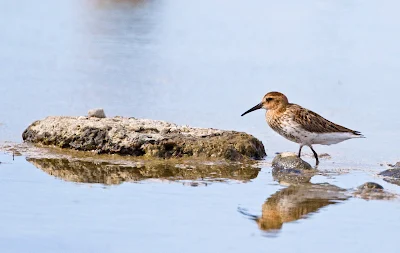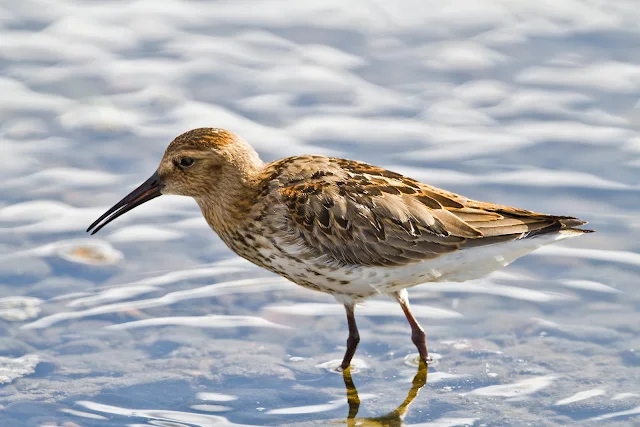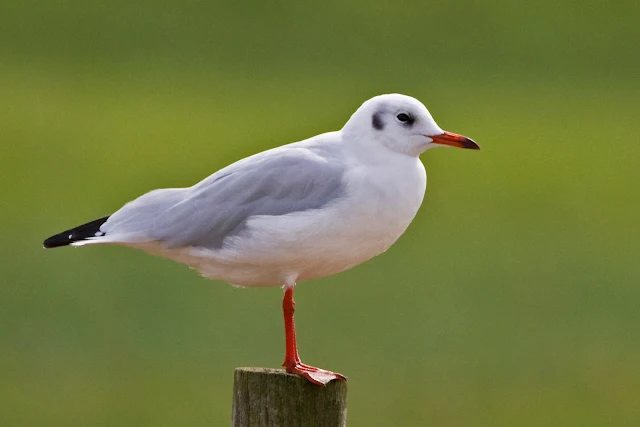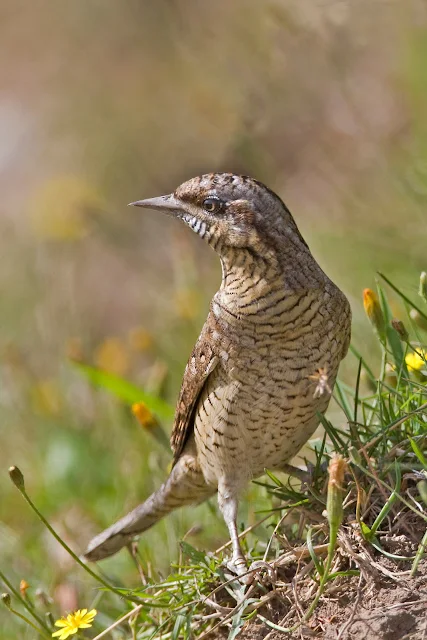 |
| Great Snipe, Spurn. Unfortunately was found dead the day after our visit. ~ thought to have been taken by a predator, either by a cat or a weasel or stoat. There was no real suggestion that the bird was unwell, it appeared to be in immaculate condition, and it seems as though the bird’s tameness and trust was the cause of its untimely downfall.
This bird's breeding habitat is marshes and wet meadows with short vegetation in north-eastern Europe including north-western Russia. Great Snipes are migratory, wintering in Africa. The European breeding population is in steep decline.
The birds are noted for their fast, non-stop flying capabilities over huge distances.[citation needed] They can fly up to 97 kilometres per hour, with researchers finding little evidence of wind assistance. Some have been recorded to fly non-stop for 48 hours over 6,760 kilometres (4,200 mi).[2] Their wings are not especially aerodynamic, lacking pointed tips, and they typically do not stop to feed despite having opportunities. The birds instead rely on stores of fat.[2]
The males display at a dusk lek during the breeding season, standing erect with chest puffed and tail fanned. They may jump into the air. They produce a variety of rattles, clicks, buzzes and whistles while displaying. 3-4 eggs are laid in a nest in a well-hidden location on the ground.
These birds forage in soft mud, probing or picking up food by sight. They mainly eat insects and earthworms, and occasional plant material. They are difficult to see, being well camouflaged in their habitat. When flushed from cover, they fly straight for a considerable distance before dropping back into vegetation.
At 26–30 cm in length and a 42–50 cm wingspan, adults are only slightly larger, but much bulkier, than Common Snipe and have a shorter bill. The body is mottled brown on top and barred underneath. They have a dark stripe through the eye. The wings are broad, and a pale wingbar is visible in flight.
|
Welcome to my Web Site which is a photographic record of my interest in Wildlife, particularly with Birds . Todate my wildlife images have appeared in various books and magazines including, Birdwatch, Birding World, Outdoor Adventure Guide, British Birds, The Birding Year Book, Birdwatching, American Birding Association, Birds Illustrated and Bird Art & Photography and also on numerous Web Sites including those of the RSPB. .
All the images are protected by Copyright, please do not reproduce without prior permission.
The photographs are 'clickable' for greater details.
The 'GALLERY PHOTOGRAPHS' show SELECTED images from this Web page grouped by SPECIES and/or AREAS rather than by date. To access these pages click on 'Peter M Beesley--Wildlife Photography--Gallery'
Thank you for visiting my Web Site.
To continue viewing please click on "OLDER POSTS" at end of each page.
Wednesday, September 18, 2013
Great Snipe
Labels:
Great Snipe,
Snipe,
Wader
Tuesday, September 10, 2013
 |
Italian Sparrow, Northrepps, Norfolk. |
The Italian
Sparrow (Passer
italiae), also known as the Cisalpine
Sparrow, is a passerine bird of the sparrow family Passeridae, found in Italy and other parts of the Mediterranean
region. In appearance, it is intermediate between the House Sparrow, and the Spanish
Sparrow, a species of the Mediterranean and Central Asia closely
related to the House Sparrow. The Italian Sparrow occurs in northern Italy and
neighbouring regions, with intermediates with the House Sparrow in a very
narrow contact zone in the Alps, a slow gradation in appearance from the Italian
to Spanish Sparrows across central and southern Italy, and more birds of
intermediate appearance in Malta, Crete, and other parts of the Mediterranean. There has
been much debate on the origins and taxonomic status of the Italian Sparrow,
especially given its possible hybrid origin. Some have classified it as a
subspecies of House Sparrow, a subspecies of the Spanish Sparrow, or as a
distinct species, a treatment followed if only for convenience by authorities
such as the Handbook of the
Birds of the World. A
DNA analysis by Glenn-Peter Sætre and colleagues published in 2011 indicated an
origin of the Italian Sparrow through hybridisation between the Spanish and
House Sparrows, and Sætre and colleagues argued that given its origins and the
limited extent of hybridisation, the treatment as a distinct species was
supported
Labels:
Italian Sparrow,
Sparrow
Subscribe to:
Posts (Atom)



















